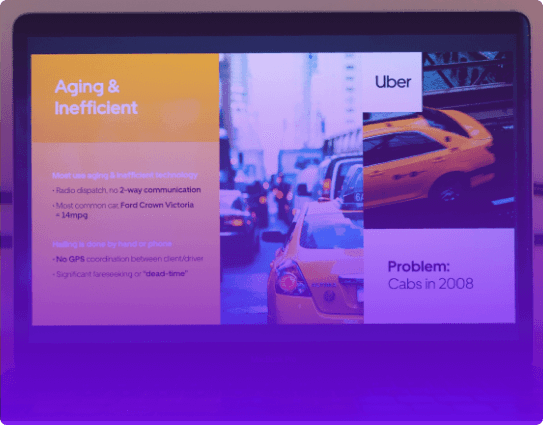Famous Pitch Deck Examples to Steal From (+Templates)
See example pitch decks by famous companies and VCs like Uber, Airbnb, WeWork, Netflix, Tinder, Dropbox, YouTube, Y Combinator, and more.


See example pitch decks by famous companies and VCs like Uber, Airbnb, WeWork, Netflix, Tinder, Dropbox, YouTube, Y Combinator, and more.
Short answer
A successful pitch deck combines clear storytelling, compelling visuals, and concise data. It highlights a real market need, presents a viable solution, unique value, and demonstrates strong growth potential.
The best pitch decks build both confidence and excitement, showing why this is the right team, solving the right problem, at the right time.
Disclaimer: The Storydoc team created these interactive famous pitch deck remakes based on publicly available slides. This is for demonstration purposes and doesn’t represent actual Storydoc decks used by these companies.
Stop losing opportunities to ineffective presentations.
Your new amazing deck is one click away!






